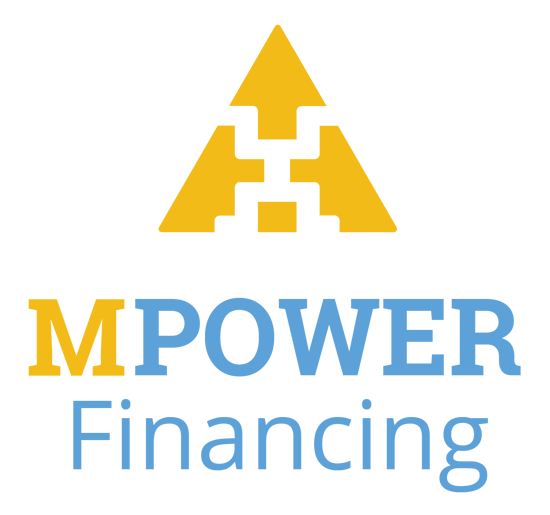Parent PLUS Borrowers: Act Soon to Keep Income-Driven Repayment
Borrowers must consolidate their loans or risk losing lower payments and potential forgiveness.
Many, or all, of the products featured on this page are from our advertising partners who compensate us when you take certain actions on our website or click to take an action on their website. However, this does not influence our evaluations. Our opinions are our own. Here is a list of our partners and here's how we make money.
Starting next summer, 3.5 million parent PLUS borrowers risk losing access to income-driven repayment (IDR) and student loan forgiveness unless they act soon.
Borrowers who consolidate before July 1, 2026 can lock in lower payments and preserve forgiveness pathways.
Those who miss the deadline will be stuck with the standard repayment plan. That's a big deal because repayment terms for the standard plan are often harder to manage than those of IDR plans.
The standard plan involves fixed monthly payments on the total debt owed. The four types of IDR plans are based on the borrower's ability to pay. IDR plans tie payments to income and family size. They can also extend repayment terms and eventually forgive remaining debt.
These changes in IDR eligibility are the result of President Donald Trump’s “one big, beautiful bill."
If you have parent PLUS loans, we'll walk you through your next steps.
What’s changing for parent PLUS loan repayment
Perhaps the biggest change: Borrowers who take out new parent PLUS loans on or after July 1, 2026 will not have access to income-driven repayment. Their only option will be the standard repayment plan.
Existing parent PLUS borrowers have the chance to preserve their IDR eligibility, but the specific plan for which they qualify will change. Currently, these borrowers are only eligible for Income-Contingent Repayment (ICR), the least generous of the four existing IDR plans. But ICR is slated to phase out by 2028. So, for the first time, parent PLUS borrowers in ICR will become eligible for a slightly more generous plan: Income-Based Repayment (IBR).
Check your estimated payments for ICR, IBR and the standard plan using the Education Department’s loan simulator.
» COMPARE: student loan repayment plan options
Parent PLUS loans will not be eligible for the government’s new income-driven repayment plan called the Repayment Assistance Plan (RAP). More information is available on the Education Department’s website.
Why should parents choose an income-driven repayment plan?
Enrolling in IDR acts as insurance against tough times. If your earnings drop, or you retire on a fixed income, your parent PLUS loan payments will likely fall. It allows you to qualify for student loan forgiveness programs. You could even qualify for $0 payments if your income is low enough.
🤓 Nerdy Tip
Parent PLUS borrowers can qualify for Public Service Loan Forgiveness in 10 years, if the parent borrower holds a qualifying nonprofit or government job. Borrowers usually have to consolidate their parent PLUS loan and sign up for an income-driven repayment plan to benefit from PSLF. 4 steps to keep your parent PLUS loans eligible for IDR
If you have parent PLUS loans, it’s important to consolidate your loans before July 2026 and switch to the ICR plan. You must also switch into the Income-Based Repayment (IBR) plan before July 2028.
If you miss these key deadlines, you’ll be permanently blocked from income-driven repayment and forgiveness.
1. Confirm your loan type
Log into your studentaid.gov account. On your dashboard, you can check if you have parent PLUS loans, if they’re already consolidated and which repayment plan you’re currently on.
If you’re already enrolled in the ICR plan, that means you previously consolidated your parent PLUS loans and don’t need to repeat the process. Skip to step 4.
2. Consolidate your parent PLUS loans ASAP
Consolidate your parent PLUS loans on the studentaid.gov website. Consolidating simply means replacing one or more federal student loan(s) with a single direct consolidation federal loan. Many borrowers, including parent PLUS borrowers, must consolidate before they can access income-driven repayment.
To qualify for income-driven repayment, parent PLUS borrowers must complete the consolidation process by June 30, 2026, according to Education Department guidance. But it can take up to six weeks for your application to get processed, so you should submit your application as soon as possible — and no later than mid-May.
Federal student loan consolidation is free, and most people finish the online application in under 30 minutes, the Education Department says. You also have the chance to choose a new student loan servicer on the application.
Once your loans are consolidated, they’re replaced with a single direct consolidation loan. This new loan’s interest rate is based on the weighted average of the interest rates of the underlying loans.
3. Select the ICR plan on your consolidation application, or enroll before July 2028
You must enroll in the Income-Contingent Repayment (ICR) plan before you can move over to Income-Based Repayment (IBR). You can select ICR when filling out your consolidation application and immediately move into the plan. Or, you can wait a bit to enroll in ICR — but you must do so before the plan closes July 1, 2028.
On the ICR plan, your monthly payments are capped at 20% of your discretionary income, and your repayment term is 25 years.
4. Make one ICR payment, then switch to IBR before July 2028
You must make at least one, full on-time payment while on the ICR plan before you can switch over to IBR.
Once that’s done, submit your application on studentaid.gov/IDR, and select the IBR plan. If you have any issues submitting the application, contact your student loan servicer. You must enroll in IBR before July 1, 2028.
On the IBR plan, your monthly payments are capped at 10% or 15% of your income, and your repayment term is 20 or 25 years, depending on when you started borrowing. (If you have pre-2014 Parent PLUS loans, you’ll qualify for the lower payments and shorter term.)
Parent PLUS deadline summary for IDR eligibility
| Deadline | Action required |
|---|---|
| July 1, 2026 | Complete student loan consolidation process. |
| Before July 1, 2028 | Enroll in the Income-Contingent Repayment Plan (ICR) and make at least one full payment. |
| July 1, 2028 | Enroll in the Income-Based Repayment (IBR) plan. |
🤓 Nerdy Tip
Consolidation is free. Don’t pay a company that claims it can “help” you for a fee. What happens if you borrow Parent PLUS loans after July 2026
Any parent PLUS loan taken on or after July 1, 2026 will make all your Parent PLUS loans ineligible for income-driven repayment — even your older loans. You’ll only be eligible for the standard plan, because all student loans must be repaid under the same plan.
For example, say you took out one parent PLUS loan in 2023, and then decide to borrow another parent PLUS loan in 2027. You must use the standard repayment plan for all of your loans.
Starting July 1, 2026, parent PLUS loans will also see new borrowing limits:
- Up to $20,000 per year, per student.
- Up to $65,000 total, per student.
If you took out a parent PLUS loan prior to July 1, 2026, you can continue borrowing up to your student’s cost of attendance for up to three years, or until your kid finishes school — whichever period is shorter.
» MORE: Best student loans for parents
How to get parent PLUS loan help
Keep copies of your student loan records, including copies of your bill payments, consolidation application and IBR application. If you contact your servicer at any point, take notes and save copies of any written correspondence. This will come in handy if any issues arise, or if your servicer makes a mistake and you need to make a student loan complaint.
Consolidating and switching repayment plans can be a confusing process — especially as Trump’s recent budget bill reshapes the federal student loan system.
You can get free, trusted parent PLUS help through your student loan servicer. If you need additional guidance, consider these resources:
- Your child’s financial aid office, even if they’ve already left school.
Advertisement



Student loans from our partners

on College Ave website
College Ave 

Best for payment flexibility
Fixed APR
2.89-17.99%
Min. credit score
Mid-600s

on Sallie Mae website
Sallie Mae 

Fixed APR
2.89-17.49%
Min. credit score
Mid-600's

on SoFi® website
SoFi® 

Fixed APR
3.18-15.99%
Min. credit score
Mid-600s
Article sources
NerdWallet writers are subject matter authorities who use primary,
trustworthy sources to inform their work, including peer-reviewed
studies, government websites, academic research and interviews with
industry experts. All content is fact-checked for accuracy, timeliness
and relevance. You can learn more about NerdWallet's high
standards for journalism by reading our
editorial guidelines.
Related articles
AD
A Better Student Loan Experience. Cover 100% of School Costs — Rates From 2.89% APR.
Get my Rate
on College Ave's website

AD

A Better Student Loan Experience. Cover 100% of School Costs — Rates From 2.89% APR.
- Apply in less than 3 minutes;
- Rates starting at 2.89% APR;
- No application, origination, or prepayment fees;
- Flexible repayment options, including deferred or immediate.

Get my Rate
on College Ave's website








